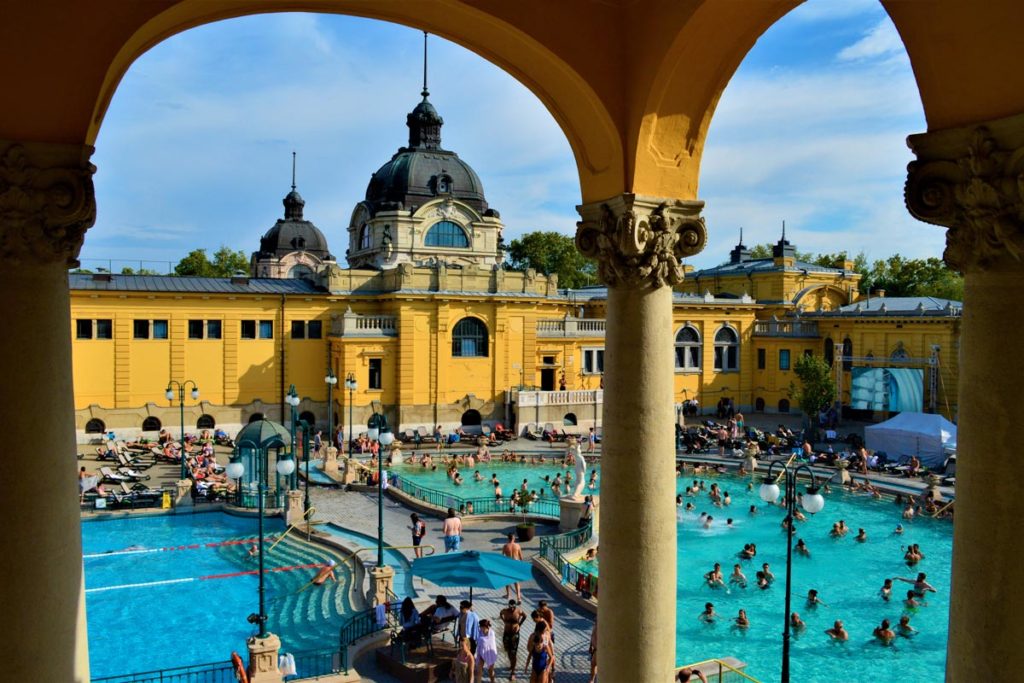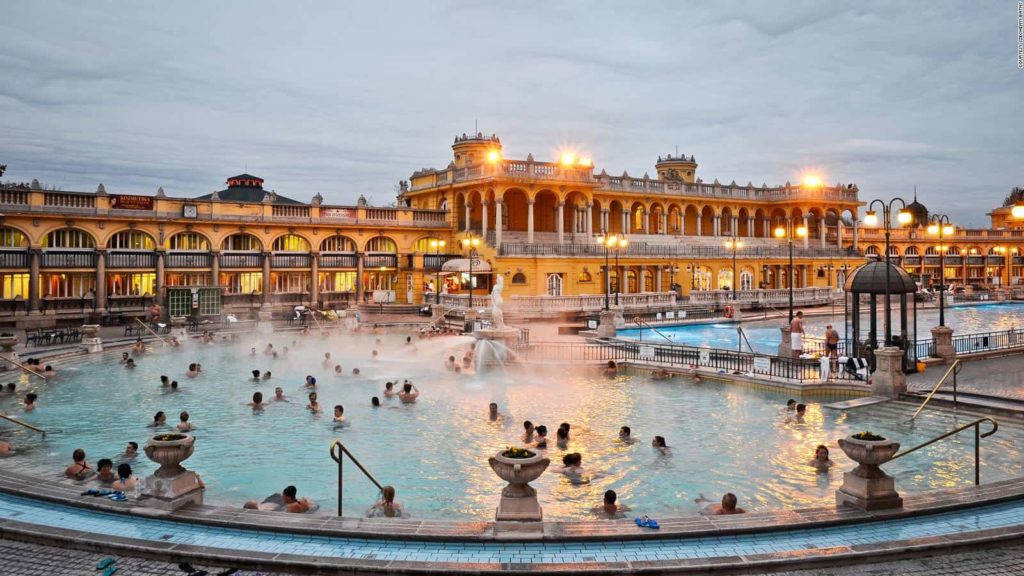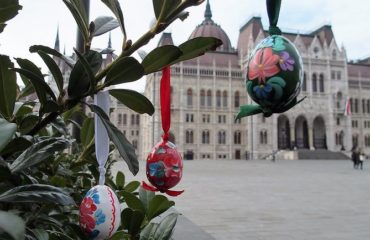Széchenyi Thermal Bath in the ‘City of baths’
Have you ever thought that there are 118 thermal springs under the region of the Hungarian capital city? In Budapest, you can find 11 thermal baths and strands. Three of them also please your eyes because they are imposing historical buildings. These institutions are called Lukács, Gellért, and Széchenyi Thermal Bath. Széchenyi Thermal Bath is the oldest and biggest bath in the Hungarian capital city. Approximately 8000 people can use it at the same time – and this number is absolutely not rare in the summer! The Bath is in the City Park (in the district XIV.) which is one of the most wonderful parks of Budapest. Several Hungarians use its nickname ‘Szecska’.
Many springs supply the bath. The first well was drilled by Vilmos Zsigmondy between 1868 and 1878. The second one is from 1936, and its thermal water is among the hottest ones in Europe. The temperature of it is 77°C. The work was led by Ferenc Pávai-Vajna.

The building
The building was designed by Győző Czigler in Neo-Renassaince and Neo-Classicist styles and opened in 1913. Many items of the indoor and outdoor decorations are inspired by the world of waters. You can see both real and mythic creatures such as mermaids, water monsters, shells, or fishes. They appear on statues, paintings, mosaics, on the top of the columns, or on the colorful glazed tiles. Discovering all of them is a nice pleasure!
The interior of the Dome Hall is magnificent. The dome itself is decorated with a Mosaic which portrays the ancient Greek god of the Sun (Helios) who drives his four horses. Other pictures show scenes from Greek, Roman, and even Egyptian baths. Moreover, you can see constellations and further paintings which symbolize the thermal springs, the Strength and Beauty. The amazing colorful glass windows are designed by Miksa Róth. In this hall, you should flash a long glance on the fountain which portrays a centaur; it is the work of József Róna.
Originally, men and women could not bath together, so there were a separated male wing and another one for women. After the 2nd world war, the situation changed a little: soviet soldiers used the right wing and every other guest visited the left one.
Benefits of the water
Thermal water here contains many useful ions such as sodium, calcium, magnesium, bicarbonate (hydrogen-carbonate), and sulfate ions. It can cure degenerative or inflammatory diseases of the joints and it is suitable for supplementary treatment of orthopedic diseases. From 1950, sludge therapy is also available for gynecological problems. There is also a special hall where you can drink the thermal water to treat yourself. It is very useful in case of gastrointestinal diseases such as gastric ulcer or reflux, but it can also help if you’ve got gout, chronic inflammation in your pulmonary system, or if your bones are too weak. Moreover, it’s one of the ingredients of a new brand of face cream!
You can choose from multiple temperatures: the coolest pool is 18°C but you can also try others with 40 or 50 °C. Besides the indoor and outdoor pools, the bath offers light and aroma saunas, a steam bath, and a leisure pool where guests can enjoy wild water, whirlpool, water cannons, or aero-massage. Medical, relaxing and even Thai massage are also available as well as pedicure, water aerobics or fitness. Quite cool facilities, aren’t they?
As an extra service, Széchenyi Thermal Bath often organizes night pool parties. Events like this are held in the summer or in the first months of the year, during the series of programs called ’Nights of Baths’.
In 2016, Széchenyi Thermal Bath won the prize of the best international thermal bath.
Good traffic:
It’s easily available by trolley bus (No.72) or subway (No.1, also known as Little Subway).

!Fun facts
The hippopotamus in the Budapest Zoo receives water from the same spring which supplies the Széchenyi Bath with thermal water as its composition is very similar to the water of the River Nile.
Until 1978, Széchenyi Bath supplied another bath, too. Dandar Bath had no own thermal springs or wells, so its water was transported on lorries from Széchenyi Bath. Fortunately, the problem has already been solved!
![]()
![]()
![]()

 Skip the Line – Parliament Panorama Cruise
Skip the Line – Parliament Panorama Cruise Christmas Market Cruise
Christmas Market Cruise Drink & Piano Show
Drink & Piano Show Unlimited Booze Cruise Downtown Budapest
Unlimited Booze Cruise Downtown Budapest Budapest New Year’s Eve Midnight Booze Cruise
Budapest New Year’s Eve Midnight Booze Cruise Halloween Cruise
Halloween Cruise





